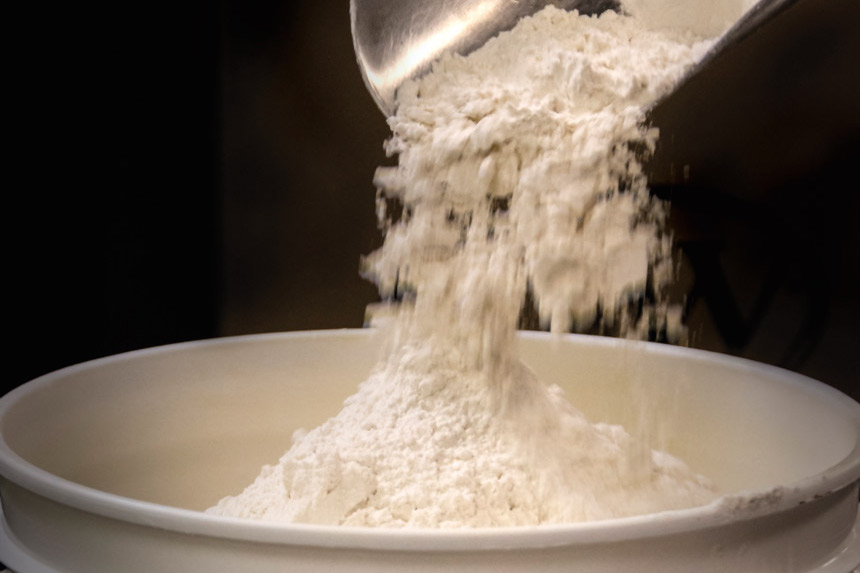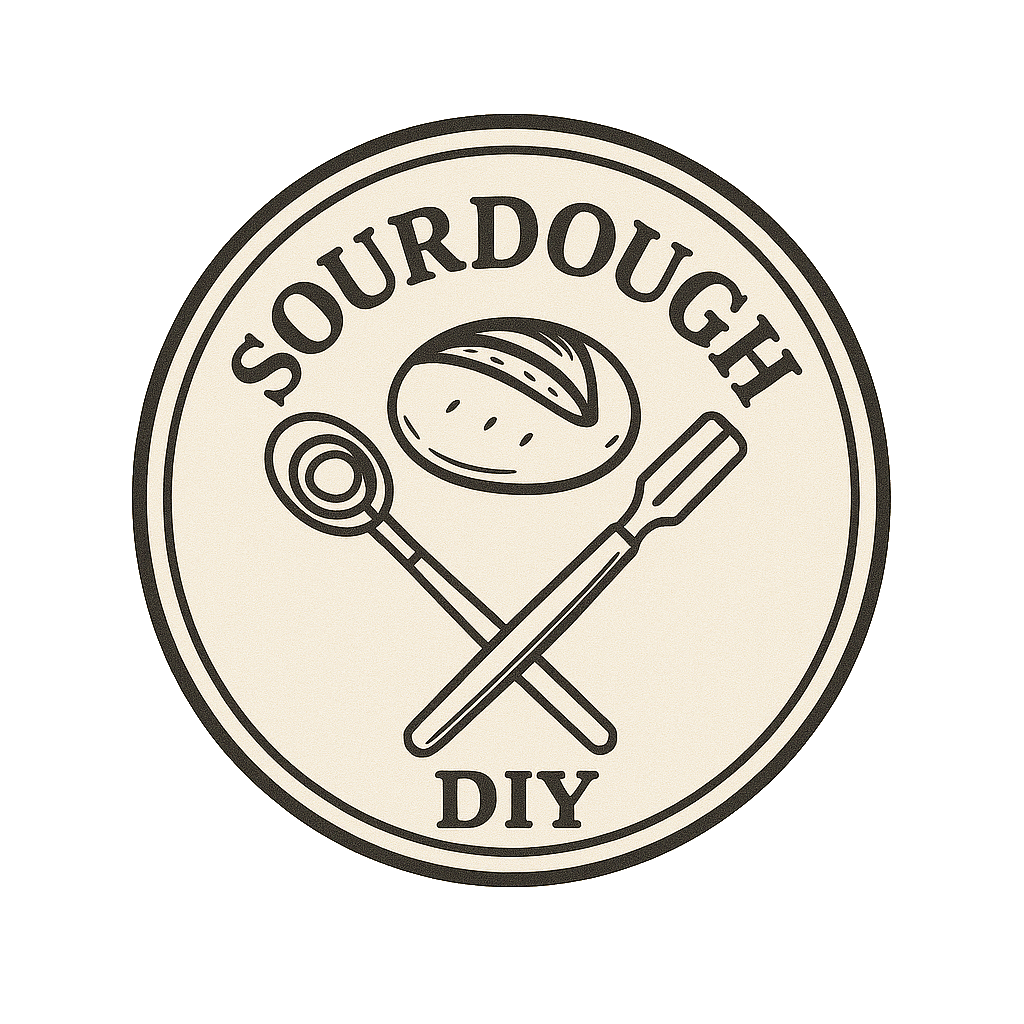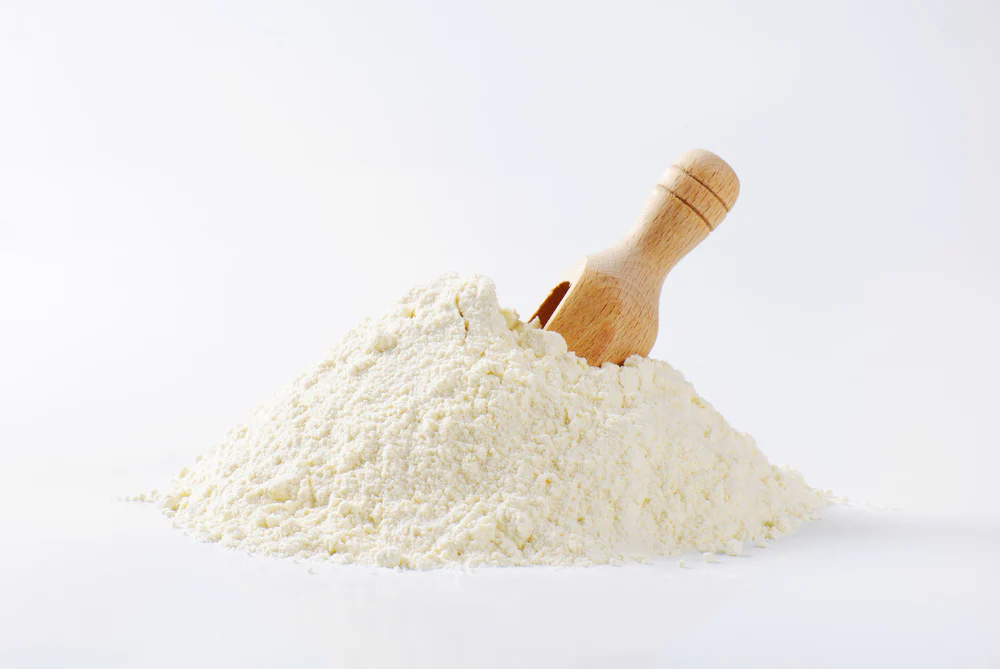With so many types of flour available, choosing the best flour for sourdough bread can be overwhelming. Different types of wheat flour, bread flour, and other varieties can be used, but which one is the most suitable for making sourdough bread?
Key Takeaways
- Choosing the right type of flour is crucial for making great sourdough bread.
- The type of flour used affects the texture and flavor of the bread.
- Bread flour and wheat flour are popular options for sourdough bread.
- The quality of the flour impacts the overall quality of the bread.
- Understanding the characteristics of different flours is key to making great sourdough.
Understanding Flour Basics for Sourdough Bread
To bake exceptional sourdough, one must first grasp the fundamentals of flour and its role in bread making. Flour is the primary ingredient in sourdough bread, and its characteristics significantly influence the final product’s quality. A trusty sourdough bread calculator will also come in handy.
The Science Behind Flour and Fermentation
The process of fermentation in sourdough bread is deeply connected to the type of flour used. Flour contains enzymes that break down starches into sugars, which are then consumed by the microorganisms in the sourdough starter, producing lactic acid and carbon dioxide. This process is crucial for the bread’s rise and flavor development.
Enzyme activity and protein content are key factors in flour that affect fermentation. The right balance ensures a healthy fermentation process, contributing to the bread’s texture and flavor.
Why Flour Selection Matters for Sourdough
Selecting the right flour is critical because it directly impacts the sourdough’s texture, flavor, and rise. Different types of flour have varying protein contents and enzyme activities, which can either enhance or hinder the fermentation process.
- Protein content affects gluten development, influencing the bread’s structure.
- Enzyme activity impacts the breakdown of starches into fermentable sugars.
How Flour Affects Texture, Flavor, and Rise
The type of flour used can result in a range of textures, from tender crumb to dense and chewy. Flavor is also significantly affected, as different flours impart unique characteristics to the bread. The rise, influenced by fermentation, is directly tied to the flour’s protein content and enzyme activity.
Understanding these basics allows bakers to make informed decisions about flour selection, ultimately leading to better sourdough bread.
The Role of Protein Content and Gluten Development
Protein content and gluten development are pivotal in determining the quality and texture of sourdough bread. The type of flour used can significantly impact the final product, making it essential to understand the differences between various flours.
High vs. Low Protein Flours
Flours can be broadly categorized into high-protein and low-protein types. High-protein flours, typically containing between 12% to 14% protein, are ideal for creating bread with a robust structure and chewy texture. In contrast, low-protein flours, with protein content around 8% to 10%, are better suited for delicate baked goods.
How Protein Affects Your Sourdough Structure
The protein in flour contributes to the formation of gluten, which is crucial for the rise and texture of sourdough. A higher protein content generally results in a more extensive gluten network, leading to a better rise and a chewier crumb.
- High-protein flours promote better gluten development.
- A robust gluten network enhances the bread’s rise and texture.
- Low-protein flours may result in a denser, less aerated crumb.
Common Problems from Using the Wrong Protein Level
Using flour with the inappropriate protein level can lead to several issues, including poor rise and undesirable texture.
Bread That Won’t Rise Properly
A bread that fails to rise properly often indicates insufficient gluten development, typically due to low-protein flour. Ensuring the use of high-protein flour can mitigate this issue.
Overly Dense or Gummy Texture
An overly dense or gummy texture can result from using flour with too low a protein content or from inadequate gluten development. Adjusting the type of flour or improving gluten development through proper mixing and proofing techniques can help.
- Check the protein content of your flour.
- Adjust your mixing and proofing techniques.
- Consider blending different types of flour to achieve the desired protein level.
Best Flour For Sourdough Bread: A Comprehensive Guide
Sourdough bread enthusiasts know that selecting the best flour is key to achieving the perfect loaf. The type of flour used can significantly impact the texture, flavor, and rise of the bread. In this comprehensive guide, we’ll explore the different types of flour suitable for sourdough bread, including bread flour, all-purpose flour, whole wheat flour, and specialty flours.
Bread Flour: The Reliable Standard
Bread flour is a popular choice among sourdough bakers due to its high protein content, typically ranging between 12% to 14%. This high protein level contributes to a stronger gluten structure, which is essential for creating a loaf with good rise and chewy texture.
Recommended Brands
Some of the most trusted brands for bread flour include King Arthur and Bob’s Red Mill. Both brands are known for their high-quality products and consistent performance in sourdough recipes.
All-Purpose Flour: Versatility and Accessibility
All-purpose flour is another option for sourdough baking, offering a balance between protein content and versatility. With a protein content usually around 10% to 12%, it can produce a good rise and texture, although it might not be as robust as bread flour.
Whole Wheat Flour: Nutrition and Flavor Benefits
Whole wheat flour adds nutritional value and a rich, nutty flavor to sourdough bread. It contains more fiber and nutrients compared to refined flours but can result in a denser loaf. Using whole wheat flour can also affect the fermentation process due to its coarser texture and higher fiber content.
Specialty Flours: Rye, Spelt, and Beyond
Specialty flours like rye and spelt offer unique flavors and textures to sourdough bread. Rye flour, for instance, is known for its distinctive taste and dense, dark bread it produces. Spelt flour, an ancient grain, provides a slightly sweet and nutty flavor.
When and How to Use Each Type
Using specialty flours can add complexity to your sourdough. For example, substituting a portion of your bread flour with rye can enhance the flavor. However, it’s essential to understand that different flours have different properties, so adjustments in hydration and proofing times may be necessary.
| Flour Type | Protein Content | Best For |
|---|---|---|
| Bread Flour | 12-14% | Sourdough with good rise and chewy texture |
| All-Purpose Flour | 10-12% | Versatile sourdough with balanced texture |
| Whole Wheat Flour | 14-16% | Nutritious sourdough with dense texture |
| Rye Flour | 8-10% | Sourdough with distinctive flavor and dense texture |

By understanding the characteristics of each flour type, bakers can make informed decisions to achieve their desired sourdough bread characteristics. Whether you’re a beginner or an experienced baker, experimenting with different flours can lead to new and exciting flavors.
Organic vs. Conventional Flour for Sourdough
For those passionate about sourdough, understanding the differences between organic and conventional flour is essential. The choice between these two types of flour can affect not only the flavor and texture of your bread but also the fermentation process.
Benefits of Organic Flour for Fermentation
Organic flour, derived from crops grown without synthetic pesticides or fertilizers, offers several benefits for sourdough fermentation. The absence of chemicals can lead to a more vibrant and healthy microbial environment, crucial for developing the characteristic sourdough flavor. Moreover, organic farming practices tend to promote soil health, which can result in flours with more complex nutrient profiles.

Top Organic Flour Brands in the US
Several US-based brands are renowned for their high-quality organic flours. Some of the top brands include:
- Matthews Cotswold Flour
- Wessex Mill Strong White Bread Flour
- Cotswold Strong White Bread Flour
These brands are celebrated for their commitment to organic practices and the quality of their flour.
Is the Price Difference Worth It?
One of the primary considerations when choosing between organic and conventional flour is the price. Organic flours are generally more expensive due to the higher cost of organic farming practices. However, for many bakers, the improved flavor and potential health benefits justify the additional expense. It’s also worth noting that a small batch of high-quality, organic flour can produce a more satisfying loaf, potentially reducing overall costs.
Creating Perfect Sourdough with Flour Blends
Experimenting with different flour combinations can lead to the creation of truly distinctive sourdough loaves. By blending various types of flour, bakers can achieve a balance of flavors, textures, and rise that might be difficult to attain with a single type of flour.
Why Blend Different Flours
Blending different flours allows bakers to combine the strengths of various flours while mitigating their weaknesses. For instance, pairing a high-protein bread flour with a lower-protein all-purpose flour can create a dough that is both strong and extensible.
- Enhanced Flavor Profile: Different flours contribute unique flavors, from the nuttiness of whole wheat to the subtle sweetness of all-purpose flour.
- Improved Texture: Blending flours can result in a more complex crumb structure and better texture.
- Optimized Rise: Combining flours with different protein contents can help achieve a better rise.
Popular Flour Combinations for Distinctive Sourdough
Some popular flour combinations include mixing bread flour with whole wheat or rye flour for added depth of flavor and nutrition. Another option is blending all-purpose flour with spelt flour for a slightly sweet and tender crumb.
Adjusting Hydration Levels for Different Flour Types
When blending flours, it’s crucial to adjust the hydration levels accordingly. Different flours absorb water differently, so bakers need to be prepared to adjust their recipes.
Working with Whole Grain Flours
Whole grain flours tend to absorb more water than refined flours. When using whole grain flours, increase the hydration level to ensure the dough remains manageable.
Compensating for Low-Protein Flours
When using low-protein flours, bakers may need to adjust their mixing and proofing times to compensate for the reduced gluten development.
By understanding how to blend flours effectively and adjust hydration levels, bakers can create complex, delicious sourdough bread that showcases the best qualities of each flour type.
Conclusion: Starting Your Sourdough Flour Journey
Embarking on a sourdough journey requires patience, practice, and the right flour. By understanding the basics of flour and its impact on sourdough bread, you can create delicious, crusty loaves that impress. The best flour to use for making sourdough bread depends on your desired texture, flavor, and rise.
Experimenting with different types of flour, such as bread flour, all-purpose flour, and whole wheat flour, can help you find the perfect blend for your sourdough baking. Don’t be afraid to try new flour combinations and adjust your hydration levels accordingly. With time and practice, you’ll master the art of bread baking and create unique sourdough recipes.
Whether you’re a seasoned baker or just starting out, the right flour can make all the difference in your sourdough journey. By choosing the best flour for making sourdough bread, you’ll be well on your way to creating delicious, artisanal loaves that will impress friends and family.
FAQ
What is the best type of flour for making sourdough bread?
The best type of flour for making sourdough bread is often a matter of personal preference, but bread flour with a high protein content is generally recommended for its ability to produce a strong gluten structure.
Can I use all-purpose flour for sourdough bread?
Yes, you can use all-purpose flour for sourdough bread, but it may not produce the same level of gluten development as bread flour, potentially resulting in a denser loaf.
What is the difference between bread flour and all-purpose flour?
Bread flour has a higher protein content than all-purpose flour, typically between 12-14%, which is ideal for producing a strong gluten structure in bread, while all-purpose flour has a lower protein content, usually around 10-12%.
Is whole wheat flour suitable for sourdough bread?
Yes, whole wheat flour can be used for sourdough bread, and it offers nutritional benefits and a richer flavor, but it can be denser and heavier than bread made with refined flour.
Can I blend different types of flour for sourdough bread?
Yes, blending different types of flour can create a unique flavor profile and texture in sourdough bread, and it’s a great way to experiment and find the perfect combination for your taste preferences.
How does protein content affect sourdough bread?
Protein content is crucial in sourdough bread as it directly affects gluten development, which in turn impacts the bread’s texture, structure, and rise.
What are the benefits of using organic flour for sourdough bread?
Organic flour can offer benefits for sourdough bread, including potentially better fermentation due to the absence of certain chemicals and pesticides, and a more natural, wholesome ingredient profile.
How do I adjust hydration levels when using different types of flour?
Adjusting hydration levels depends on the type of flour used; for example, whole grain flours tend to absorb more water than refined flours, so you may need to increase the hydration level accordingly.





Leave a Reply